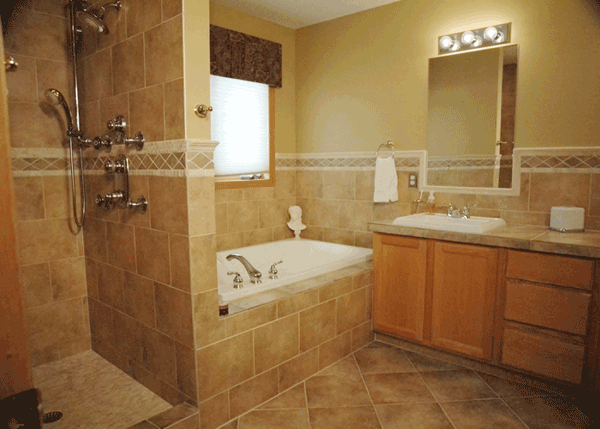 A well-designed bathroom will not only raise the monetary value of your house, but will also improve your daily quality of life. As it will become the most used room in your home, it’s important you avoid the common bathroom design mistakes that can lead to it being the most despised room in the house.
A well-designed bathroom will not only raise the monetary value of your house, but will also improve your daily quality of life. As it will become the most used room in your home, it’s important you avoid the common bathroom design mistakes that can lead to it being the most despised room in the house.
1. Haste Makes Waste
Designing a bathroom takes patience and planning. The materials and skilled labor needed are expensive. And once the work is done, it's hard to change. (Moving a toilet is not as easy as moving a sofa.) Check with family and friends who have had similar work done. Get quotes. Research bath design. Then go ahead and start the project.
2. Underestimating Costs
Underestimating costs in the budget can lead to all kinds of nasty surprises mid-project. The budget is of course part of the planning, but is often given too little attention. Bathroom fixtures, materials, and labor costs run high, and invariably will end up higher than you expected. Plan your budget accordingly.
3. Space Inefficiency
Unlike other rooms in your house, the bathroom is quite limited as to where things can go and how many things can go in there. When planning, measure precisely, account for non-movable infrastructural elements (pipes, wiring, etc.), and think about how you will use the fixtures in the bathroom in practical, day-to-day terms.
4. Forgetting Storage
Having too little storage is less of a problem if designing a half bath, but a full bath needs plenty of cabinets, shelves, drawers, towel racks and hooks to make it practical as well as attractive. If it's to be a shared bathroom, make sure each family member has at least one storage area to call his or her own.
5. Short-Sighted
What's trendy now will be stale tomorrow; meaning, if you need to sell your home down the road, that flamingo-shaped pink pedestal sink and matching web-footed bathtub could stall your sale. Stick with classic styling, neutral colours, and quality materials that will stand the test of time.
6. Poor Material Choices
The same wood your nightstand is made from probably wouldn't do well in the environmentally harsh conditions of your bathroom. The same thought goes for floors, walls, and countertops. Buy materials specifically designed to withstand the moisture, humidity, and daily heavy use a bathroom will endure. Check with the experts at home improvement stores and online. This is one area you don't want to scrimp on, particularly where safety is an issue, such as flooring that becomes easily slippery.
7. Poor Ventilation
Don’t allow your bathroom to end up as an unpleasant dank room-instead think about ventilation very carefully. A quality ventilation system will ensure that your bathroom is not only able to vanquish unpleasant odours, but is also able to usher out steam and humidity that can result in rust, mould and mildew. In addition to an electrical vent, consider adding a window if possible. This will provide a natural airing-out method and give the added benefit of making your bathroom look larger.
8. Poor Lighting
Good lighting is essential to any bathroom, for safety's sake and usefulness, as well as making things appear aesthetically pleasing. Make sure the lights above your sink are bathroom-rated, and consider installing watertight fixtures near the tub and shower. Adding a window allows natural light to come in during the day.
9. Inadequately Waterproofing
A good rule of thumb is to plan for waterproofing first, aesthetics second. Use durable homogeneous materials like tile, stone, stainless steel, glass, and specially-treated hardwoods. Stay away from particleboard, veneered cabinetry, thin-plated metal fixtures, laminate counters, and wallpaper. Take into account water exposure when planning every aspect of your bathroom. Failing to do so can lead to hazardous and costly damage.
10. Poor WC Positioning
Basically, you want to make sure when designing your bathroom that you consider access and privacy issues. The toilet, for example, shouldn't be facing the door and where possible should be visually screened somehow (like with a short partition wall). Consider the needs of family members too. Elderly people may need a support bar near the toilet and in the shower. Children need easy-to-use controls. The key is planning, planning, and then more of the same.
11. Ignoring Water Wastage
Last but not least is water wastage. Ignoring the amount of water your bathroom wastes not only is a mistake for your budget but also a mistake for the environment. Nowadays there are so many eco-friendly products on offer that there is little excuse to waste water in the bathroom. Ensure your toilet offers economical full flush and half flush options, and that you select a shower head and faucets that all incorporate water-saving technology. That way, you can enjoy your beautiful new bathroom in the knowledge that it’s not at the expense of the environment.







